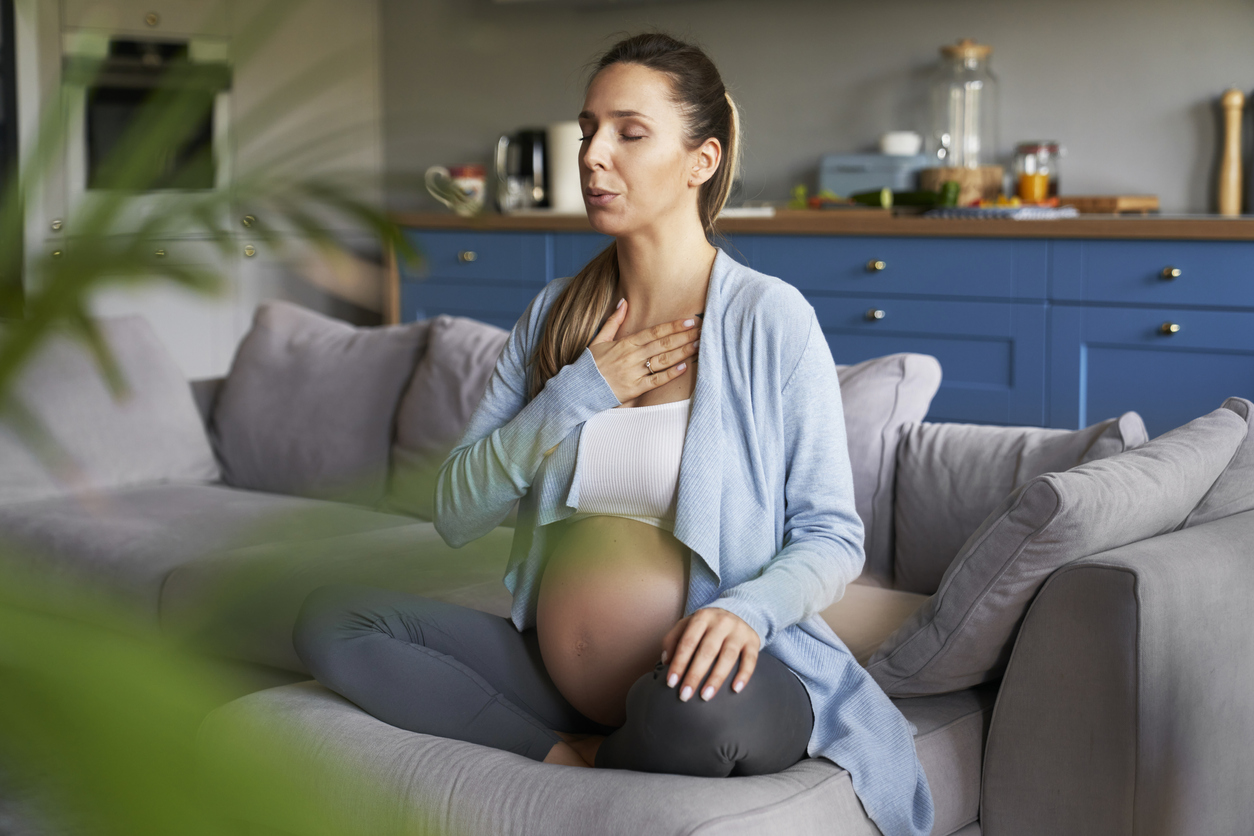Dianne Edmonds explores some simple relaxation methods to help clients who want to prepare for labour and life as a new Mum.
In our Preparation for Birth classes, we teach women and their partners some ideas to use to help them to focus as a tool for labour. This includes a simple relaxation method that is based on our body’s physiological response to stress and highlighting the focus on the breath out. If a woman is breathing out during a contraction in labour, then she can’t be holding her breath. We want this to be simple, as 1) there is a limited amount of time in the one class to teach this and 2) it needs to be easy for them to use during labour.
When a client is trained over a regular basis with you, there is more opportunity to build these skills into their training. This enhances their ability to ‘draw’ on the focus they have learned when practising with you, either one on one or in a class situation. When the contractions of labour build up, they need to enhance their focus on the breath out to not hold their breath and tense up in their body. This enables the physiological responses of the hormones of labour to work, rather than be inhibited by the fear and tension response.
During the first stage of labour, the contractions of the uterus result in the dilating of the cervix – the opening of the uterus – to 10cm. This process takes a variable amount of time, so each client’s experience will differ. The time will also differ from pregnancy to pregnancy in the same client. As clients get more tired or the contractions intensify, they may be less able to cope with the feeling of the contractions. Breathing out needs to become much more deliberate as the first stage of labour progresses and, for those who have done some training and practice in this area, it will be easier for them to do.
A typical response to stress is to tighten up the body. The shoulders can become raised, fingers clenched, legs crossed, jaw clenched and teeth gritted. Other responses can include butterflies, increased heart rate, and shallower and more upper-chest breathing. A technique called Mitchell’s Physiological Relaxation uses simple cues to move the body out of the position of tension that can occur into what we call a position of ease. We explain this to women and their partners in the class using the example that, when a football is kicked, if the hamstrings didn’t relax then they would tear. This uses a law in the body called the law of reciprocal inhibition. This can be used throughout the body and can be modified to do in different positions, as a tool for labour.
Commands used include:
- Pull the shoulders down away from the ears and stop pulling them down. Feel that new position of your shoulders lower down.
- Move the elbows into a comfortable position and stretch out your fingers and thumbs, then stop stretching and feel your resting fingers.
Then they can take a moment to notice their breathing and imagine that, if they were in labour, they could breathe out the feeling of tension in their body through their mouth or imagine it leaving their body down their arms, through their fingers.
We then move onto the lower limbs and, if they are sitting, ask them to move their legs into a comfortable position and uncross their feet. Then they are instructed to point their toes inside their shoes and stop, then feel their resting feet. We go through noticing their shoulders are lower, their fingers are long and soft, and their feet are resting. This allows them to take note of the changed position in their body and then to focus again on their breathing out, also adding in imagining that they could breathe any tension out of their body down their legs and out through their toes.
We move through the rest of the body to unclench their teeth and help them to become aware of any other tension areas, and practise the breathing focus in this relaxed position. Then, standing them up, they can repeat the focus, for example when leaning over a chair, and pay attention to their shoulders and hand position, while breathing out for a ‘pretend’ contraction timed for between 30 and 90 seconds to give them an idea of how long a contraction may last.
After this, different positions can be tried to give them ideas on how they can use this relaxation and breathing focus more actively when they are in labour. Positions include standing, lying on their side, sitting on a ball and in the hands and knees position, either when leaning over a ball or using a chair for support.
One final tip given is that this process, for example in sitting, can be used after the birth when holding, settling or feeding their baby. Simple cues like using low shoulders, fingers long and soft and feet resting, followed by three easy breaths out, can help to relax some of the tension in a new mum. Taking a few moments can help them to let go of the tension in their body and to use this concept during life moments, for example, when sitting in a waiting room or having a blood test or an examination.
During stretches at the end of a training session is one time when you could include some focus on the breathing out for your pregnant clients, to help them to enhance the skills they already have and deepen their mental and physical preparation for their birth.
Want to learn more from Dianne Edmonds? Check out her 3 online courses… Third Trimester Training for Labour, Ante Natal Core Training and Early Post Natal Programming.








